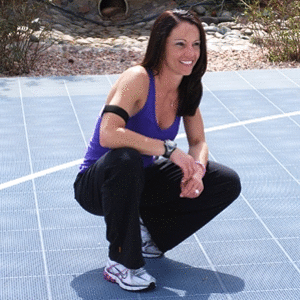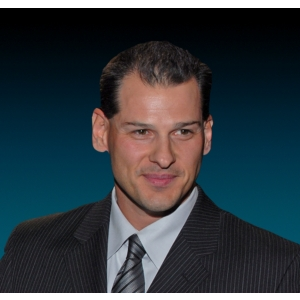Cardio exercise is training that consists of sustained exercise that stresses the cardiorespiratory system. Loosely translated: cardio is consistent movement that makes your heart and lungs work harder than they do at rest. Folks that are used to the gym environment usually think of cardio exercise in terms of sessions of cardio like 30 minutes on a treadmill or 20 minutes on a stationary cycle. But cardio can take many forms: a brisk walk around the neighborhood, a pick-up basketball game, playing in the park with the kids. Cardio exercise can become quite precise when we begin to examine heart rate training zones, training for sport specific goals, cardiac rehab, etc. For most of us, it is just a matter of getting in additional activity each day to maintain our weight and improve the health of our heart and lungs. Start small and choose modes of cardio that suit your preferences and lifestyle.
Cardiovascular exercise is exercise that increases your metabolic rate. Virtually all exercise does that. While that is the proper definition, we don’t follow just English here, and so an appropriate albeit improper definition really means that cardio raises your heart rate to 80% or greater of your age adjusted max. For men, 220 minus your age is 100% of your cardiovascular max so subtract 20%, I do that by subtracting 10% twice.
So, I am 65; 200-65 means 155; subtract 15.5 twice or 31, means that my heart rate has to be at 124 or greater to be in the cardio range. For women, its 208 minus 82% of their age, its just too tough do that so I just take 220 minus the age for both men and women. Another way of looking at it, is when you start sweating you are the 80% range assuming that you are sweating because of exercise. (And not because you are being interviewed by an IRS agent).
Cardiovascular exercise is designed to increase your overall stamina, to burn calories, and to improve the function and efficiency of your heart and lungs. It will also help with managing many health risks, such as lowering blood pressure and cholesterol. To be able to do this you must overload your heart and lungs. Overloading starts with slightly elevating the heart rate by increasing your intensity or duration while exercising. The goal is to put a stress on the cardiovascular system. For a beginner this would mean just walking and concentrating on the amount of time you can walk. Start off with as little as 10 minutes and as you gain strength in your cardiovascular system and your legs, you can increase the time and number of days per week you perform your cardio. Once you can maintain a walk for 30 minutes, additional stress on the cardiovascular system is needed to continue to improve. Your cardiovascular exercise might now require new overloads, such as intervals done on cardio equipment such as bikes or treadmills, or increasing your walk pace outside to a jog or a run. With this increase in workload, you are still improving your heart and lung strength but you are also working on another important part of cardiovascular training, the increase in muscle strength. Cardiovascular training is not just the heart and lungs but is a good way to build core, upper body and lower body strength and endurance.
Cardio means “heart” and vascular means “vessels that circulate fluids.” Keeping this in mind, cardio exercise typically refers to activities that cause a sustained increase in your heart rate and breathing and consequently, an increase in the circulation of blood and oxygen throughout the body to the muscles you’re working. The more difficult the activity and the harder you go, the more demand is placed on your cardiovascular system.
Common activities people do for cardio exercise, either outside, or in the gym, include but are not limited to: walking/jogging/running, elliptical machine, cycling or stationary bike, rowing machine, swimming, stair stepper, playing sports such as basketball or soccer, and jumping rope. However, if the above activities are not something you enjoy, strength training can also challenge your cardiovascular system while increasing the tone of your muscles as well. The activities you choose to do should be those that are enjoyable to you, this will increase the likelihood that you’ll stick with it!
Start off gradually by working up to 20-30 minutes of continuous activity at a level of difficulty that challenges you, but at which you can still hold a conversation with someone. If you don’t have the time or are physically unable to do 20-30 minutes continuously, that’s okay, break it up into multiple 10 minute segments until you reach a total of 20-30 minutes for the day. Try to do this at least 2-3 days/week to start and work your way up to 5 days/week.
Continue Learning about Cardiovascular Training
Important: This content reflects information from various individuals and organizations and may offer alternative or opposing points of view. It should not be used for medical advice, diagnosis or treatment. As always, you should consult with your healthcare provider about your specific health needs.





